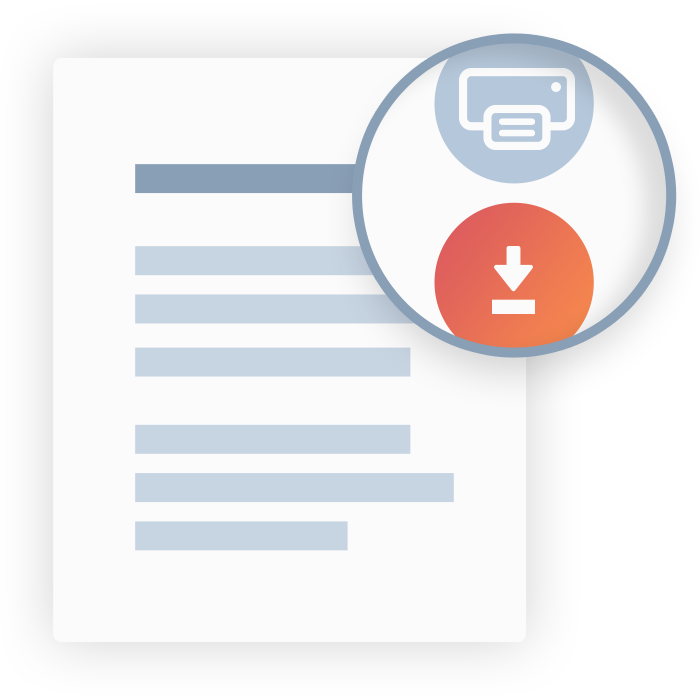


If you own a copyright, you may want to transfer it to another party, usually for financial compensation. You first need to define the limits of use for your copyrighted property. A voluntary transfer of copyrighted property is not permitted without a document signed by the owner.
By executing the Copyright Assignment, the prior owner (assignor) transfers their rights to the new owner (assignee). After signing and verifying the document, the assignee is the sole owner of the copyrighted property. The new owner can license it or transfer the ownership to someone else.
A Copyright Assignment is used by a copyright owner to transfer that ownership to another subject. By signing this document, the owner gives up their copyrighted property and is compensated for it, as defined in the contract.
Copyright Assignments are common in the music industry, for instance. An artist would transfer the ownership of musical pieces to a record company with more resources to promote and sell it. In return, the artist, as the assignor, may receive a share of the profits. However, the album becomes the property of the record company.
Depending on your state, a Copyright Assignment may also be known as:
Assignment of Copyright Ownership
Transfer of Copyright Ownership
Intellectual Property Assignment Agreement
Assignment of Intellectual Property Rights
Owners of a copyrighted property need a Copyright Assignment to transfer the rights to another party. A Copyright Assignment is mostly used in these cases:
The owner of the copyright changes their name.
The owner entity changes its business name.
An asset passed on to heirs.
If the company is sold with its copyrights.
After a bankruptcy, as part of the distribution of assets.
As debt security.
Create your own documents by answering our easy-to-understand questionnaires to get exactly what you need out of your Copyright Assignment.
Laws vary by location. Each document on 360 Legal Forms is customized for your state.
Fast and easy
All you have to do is fill out a simple questionnaire, print, and sign. No printer? No worries. You and other parties can even sign online.
Your Copyright Assignment needs to be carefully created to allow the legal transfer of ownership. Both parties must have their obligations and rights defined. Rather than risking an incomplete contract, you can rely on 360 Legal Forms.
Let 360 Legal Forms help with our extensive library of attorney-vetted legal forms. The process is fast and easy. All you have to do is fill out our easy-to-understand questionnaire. Once complete, simply download your form as a PDF or Word document from your secure online account.
To create your document, please provide:
Assignor information: Full name and address of the copyright owner. Select if the owner is a business or an individual.
Person of authority information (optional): Name and title of the person authorized to sign this document.
Name of the copyrighted property: The official name of the copyrighted ownership.
Assignee information: Name and address of the recipient of the copyright.
Date: Define when the Copyright Assignment goes into effect.
Select the state: Choose the state’s law to apply in case of a dispute. Also, select the state and county where the agreement is to be signed.
Assignor: In the context of a Copyright Assignment, this is the copyright owner who is assigning the rights.
Assignee: The person or entity who receives ownership of the copyrighted material.
Person of authority: If an entity owns the copyright, an authorized representative would have to sign the Copyright Assignment.
A Copyright Assignment needs to be signed by the current owner of the copyright (the assignor) and the person or entity receiving that ownership (assignee). If the assignor is an entity, the document is signed by a designated person of authority.
After signing the document, the assignor and the assignee should keep a copy of the Copyright Assignment. Notarizing the assignment is not required, but it’s recommended for several reasons, including:
Some states require Copyright Assignments to be recorded.
The recording may be used to validate the transfer of copyrights.
The documents become public, and their authenticity can’t be disputed.
The transfer will appear in the Copyright Office public records.
By signing the document, the recipient of the copyright receives exclusive rights to:
Publicly display or perform the copyrighted work
Sell or license the copyright
Reproduce the copyrighted work
Distribute the copyrighted work
Use the copyrighted work to create derivative work
A Licensing Agreement allows a licensee to use the copyrighted work for approved uses. The ownership of the copyright doesn’t change.
A Copyright Assignment transfers the ownership of the relevant copyright from one party to another. Once loses, the previous owner loses all rights to the copyright property, which the new owner can go on to sell or license it.
Under the copyright law of the United States, the following types of work can be protected:
Compilation: A collection of existing copyrighted material that can also be copyrighted separately. For example, a collection of songs performed by various artists or a book of short stories by different writers.
Dramatic Works: This includes scripts, plays, screenplays, operas, and the accompanying music.
Literary works: Articles, novels, essays, advertising, catalogs, nonfiction, computer programs, and more.
Music Works: This includes the melody and the lyrics.
Sound Recordings: Sound effects, voice, and music.
Audiovisual Works: Videos, film strips, and movies.
Choreographic Works and Pantomimes: Excluding dance steps.
Graphic, Pictorial, and Sculptural Works: Cartoons, drawings, sketches, slides, greeting cards, engineering and architectural drawings, globes, maps, charts, fabric designs, and more.
Vessel Hulls: The design of boats can be copyright for ten years.
Derivative Works: Refer to any new work that’s based on an existing work. A typical example would be remixes of popular songs. If a derivative work is based on a copyrighted work, it can only be copyrighted if permitted by the owner of the original work.
Semiconductor Chip Mask Works: Semiconductor chips have been copyrighted since 1984. This is a specific copyright administered by the Copyright Office.
Architectural Works: Since 1990, building designs can be copyrighted in the United States.
Individuals and businesses that infringe on others’ copyrights may face legal action. Depending on the severity of the offense, the results can be imprisonment or a fine. To avoid breaching copyright law do the following:
Create contracts: If you work with agencies or freelancers, assign the copyright to your company.
Education: Learn about copyright laws and what’s needed to avoid legal action.
Internal control: Before using any external work, ensure that you have the proper approval.
Create: You are free to use the content you’ve created.
Purchase from respectable sellers: To ensure that you are not buying an illegal version of copyrighted material, work with reputable companies.
Our exhaustive library of documents covers your personal, business, and real estate needs with all of your DIY legal forms.
Create professional documents for thousands of purposes.
Make unlimited documents and revisions. Sign online in seconds.
Our documents are vetted by lawyers and are applicable to all 50 states.